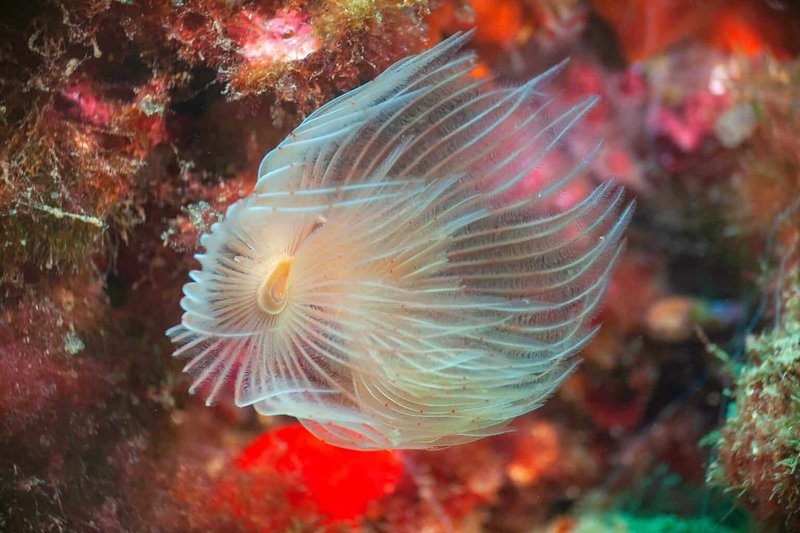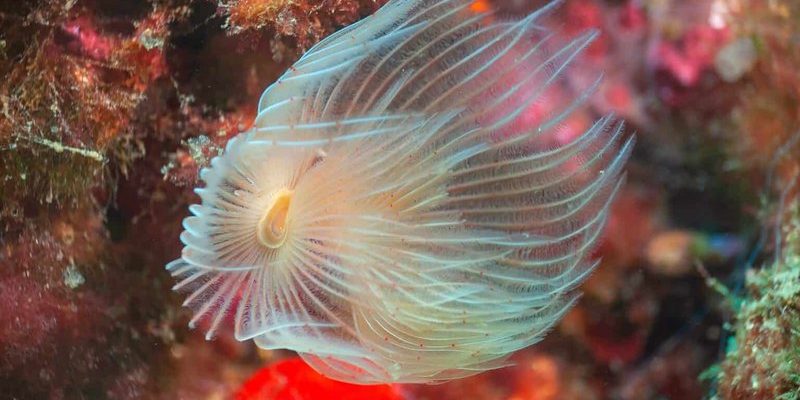
Bristle worms belong to the phylum Annelida and are primarily found in marine environments, making them vital players in the underwater food chain. They have a reputation for being both scavengers and predators, depending on their species and the circumstances. So, whether you’re a scuba diving enthusiast looking to understand the creatures you’ve encountered or simply a curious reader, this exploration will shed light on the complex dietary habits of these intriguing worms.
What Are Bristle Worms?
Bristle worms are segmented worms known for their bristle-like structures, called chaetae, which can be found along their bodies. These bristles help them move through their environment, whether that’s burrowing into the sand or clinging to rocks. There are over 10,000 species of bristle worms, and they come in many shapes and sizes, from the tiny ones you might need a magnifying glass to see, to the larger, more noticeable varieties.
You might wonder why they’re called “bristle” worms. Well, those chaetae—made of chitin—are what give them that name. Think of them as the worms’ version of hair, helping them grip surfaces and navigate their often rocky or sandy homes. This adaptability is part of what allows them to thrive in various marine habitats, from coral reefs to deep ocean floors.
Are Bristle Worms Scavengers?
Yes, many bristle worm species are primarily scavengers. They are opportunistic feeders, meaning they’ll chow down on whatever’s available in their environment. This includes decaying organic matter like dead fish, algae, and detritus. For a bristle worm, this diet is like a buffet; they’re always on the lookout for a meal that doesn’t require much effort.
Imagine walking into a restaurant and finding a table full of your favorite dishes. That’s what it’s like for a bristle worm when it encounters decomposing material. They have a keen sense of smell, which helps them locate food sources even when it’s buried under the sand or hidden in crevices. This scavenging behavior plays a critical role in the ecosystem by helping break down organic matter and recycle nutrients back into the aquatic environment.
Are They Predators Too?
While they’re well-known scavengers, many bristle worms also exhibit predatory behavior. Some species actively hunt smaller marine creatures, including other worms, small fish, and crustaceans. They do this using a combination of speed and stealth. Picture a bristle worm lying in wait, camouflaged against the ocean floor, ready to strike when an unsuspecting meal swims too close.
This predatory side is particularly evident in the larger, more aggressive species, like the fireworm. Fireworms have venomous bristles, which they use to defend themselves and subdue prey. So, while they might snack on leftovers like other bristle worms, they can also pack a punch when it comes to capturing a live meal. This dual role as both scavenger and predator emphasizes their importance in the food web, helping to maintain balance in their ecosystem.
Feeding Habits and Techniques
Now that we know their dining options, let’s take a closer look at how bristle worms actually feed. Depending on whether they’re scavenging or hunting, their techniques can vary quite a bit. When scavenging, bristle worms will use their chaetae to dig through sand or detritus, sifting through the material to find edible morsels. They have a specialized mouth that helps them grasp and consume food efficiently.
For predatory feeding, bristle worms have developed fascinating strategies. Some use their speed to dart after prey, while others rely on patience, lurking until the right moment to strike. Let’s break down some common techniques:
- Ambush Hunting: Laying low, waiting for prey.
- Active Chasing: Swiftly pursuing smaller fish or crustaceans.
- Grappling: Using their bristles to grip onto slippery prey.
These diverse feeding methods showcase just how adaptable bristle worms are, making them successful predators and scavengers in their habitats.
Why Their Diet Matters
Understanding the diet of bristle worms isn’t just a fun fact for ocean lovers; it highlights their essential role in marine ecosystems. By consuming dead organic material, these worms help recycle nutrients, ensuring the health of their environment. This process benefits other marine life, as it contributes to a balanced ecosystem where various species can thrive.
Moreover, predatory bristle worms help control populations of smaller marine animals. This predator-prey dynamic is crucial for maintaining biodiversity, keeping weaker species in check, and allowing for a diverse range of life forms to coexist. In this way, bristle worms may be small, but they’re like the unsung heroes of the ocean floor.
Impacts on Aquaculture and Marine Life
In aquaculture, bristle worms can be both beneficial and problematic. On one hand, their scavenging can help break down waste and recycle nutrients. On the other hand, if their populations grow too large, they can compete with farmed fish for food or even prey on smaller fish and crustaceans. This delicate balance demands careful monitoring in aquaculture environments.
Fisheries also consider bristle worms when assessing the health of the marine ecosystem. Healthy populations of these worms often indicate a balanced environment. However, sudden increases or decreases in their numbers can signal shifts in water quality or ecosystem dynamics, alerting scientists and fishermen alike to potential issues.
So, are bristle worms scavengers or predators? The answer is both! These fascinating creatures demonstrate the complexity of marine life; they adapt their eating habits based on what’s available and their specific species. With their dual roles in the ecosystem, bristle worms highlight the intricate balance of life underneath the waves.
Next time you think of the ocean, remember that it’s not all about flashy fish and coral reefs. The unsung heroes like bristle worms are vital for maintaining the health of the underwater world. By understanding their diet and habits, we can appreciate the delicate interplay of life beneath the surface and the important roles all creatures play in the grand scheme of things. After all, every creature, no matter how small, has a story to tell and a role to play.

